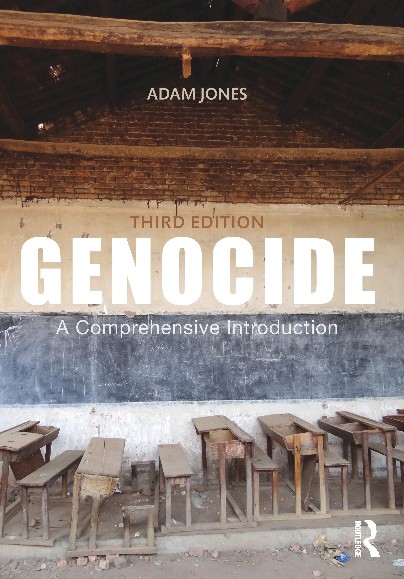 |
| Adolf Hitler |
By Ray Fisman
Slate.com, June 1, 2011
"From Rosa Parks' refusal to move to the back of the bus in Montgomery, Ala., to the 'Little Rock Nine,' who defied school segregation in Arkansas, most of the civil rights clashes of the 20th century played out on the turf where the Confederacy had fought to preserve slavery 100 years earlier. If a century seems like a long time for a culture of racism to persist, consider the findings of a recent study on the persistence of anti-Semitism in Germany: Communities that murdered their Jewish populations during the 14th-century Black Death pogroms were more likely to demonstrate a violent hatred of Jews nearly 600 years later. A culture of intolerance can be very persistent indeed. Changing any aspect of culture -- the norms, attitudes, and 'unwritten rules' of a group -- isn't easy. Beliefs are passed down from parent to child -- positions on everything from childbearing to religious beliefs to risk-taking are transmitted across generations. ... 'Good' cultural attitudes -- like trust and tolerance -- may thus be sustained across generations. But the flipside is that 'bad' attitudes -- mutual hatred and xenophobia -- may also persist. The authors of the new study, Nico Voigtländer of UCLA and Joachim Voth of the Universitat Pompeu Fabra in Spain, examine the historical roots of the virulent anti-Semitism that found expression in Nazi-era Germany. In a sense, their analysis can be seen as providing a foundation for the highly controversial thesis put forth by former Harvard professor Daniel Goldhagen in Hitler's Willing Executioners.
Goldhagen argued that the German people exhibited a deeply rooted 'eliminationist' anti-Semitism that had developed over centuries, which made them ready accomplices in carrying out Hitler's Final Solution. To compare medieval anti-Semitism to more recent animosity toward Jews, the researchers combine historical records from Germania Judaica, which documented the Jewish communities of the Holy Roman Empire, with data on the rise of anti-Semitism under Hitler, collected in Klaus-Dieter Alicke's Encyclopaedia of Jewish Communities in German-speaking Areas. To illustrate their approach, Voigtländer and Voth draw a comparison between the cities of Würzburg and Aachen, two small cities a couple of hundred miles apart with populations of little more than 100,000 in 1933 but with very different responses to Nazi ideology. Each city had a Jewish community dating back to at least the 13th century. When the Black Death came in 1348, it wiped out about half the population of Europe. In Germany, the plague was widely blamed on Jews poisoning wells. Jews in Würzburg had already been targeted with a violent pogrom 50 years earlier, allegedly for 'desecration of the hosts [sic]' in a local church, though it may have had more to do with the large sum owed to Jewish moneylenders by a local count. With another attack imminent, in 1349, the community chose mass suicide instead. In Aachen, no Black Death pogroms occurred, despite warnings from other communities that if the city failed to take action, its Jews might poison its wells. Fast-forward nearly 600 years. Pogroms were rare prior to Hitler's election in 1933, but not unheard of. Würzburg was among the 37 communities that targeted their Jewish communities with Weimar-era attacks. In national elections in 1928 the Nazi Party, running on an emphatically anti-Semitic platform, received 6.3 percent of the vote in Würzburg, close to double the Nazi vote share in the rest of the district. In Aachen, about 1 percent of the vote went to the Nazis. Once the Nazis took power, 44 percent of the [Jewish?] population of Wurzburg was deported to concentration camps. In Aachen, 37 percent of the population was deported -- still a tragically high figure, but notably lower than for Würzburg. Voigtländer and Voth find that these patterns generalize to German cities more broadly. In cities with Black Death pogroms, Jews were six times more likely to have been targeted with attack during the 1920s than in places like Aachen. Similarly, the Nazi party vote share was 1.5 times higher in communities with Black Death pogroms. To the best of their ability, the authors base their calculation on an 'apples-to-apples' comparison of communities with fairly similar geographies and other attributes. (In their introduction, Voigtländer and Voth highlight the sharp differences in the treatment of Jews through the ages in communities no more than 20 miles apart.) [...]"
[n.b. Thanks to Jo Jones for bringing this source to my attention.]














I wish I had found your blog earlier in my research. I am working on a project of antisemitism for a summer course I am taking at the University of Texas at Tyler. My focus is psychology and interventions. I have a few days left (due 8/12/11) if you have any suggestions for my further research I would appreciate it. Thus far I have found it difficult to find information on suggested interventions. Thank you for an informative blog.
ReplyDeleteHi Rana, I'd encourage you to check out Chapter 10 of my textbook, "Genocide: A Comprehensive Introduction" (www.genocidetext.net), which focuses on "The Psychology of Genocide." In addition to the text I wrote, there are suggestions for further reading, and a lot of additional sources in the notes. Good luck!
ReplyDelete